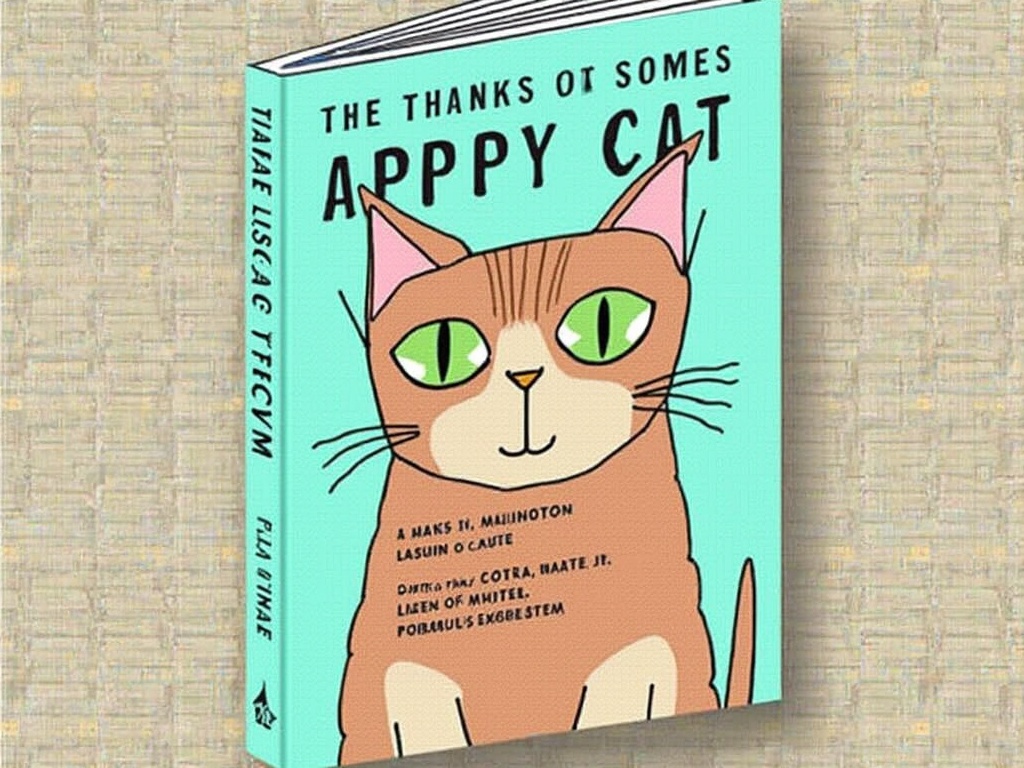The phenomenon of cat-centric literature has transcended mere niche interest, with feline companions inspiring everything from historical texts to modern bestsellers across diverse genres and styles. Cat enthusiasts worldwide are discovering that their everyday observations provide rich material for compelling books—whether memoir, fiction, or educational—proving that our mysterious feline friends contain multitudes worthy of full-length literary exploration.
Key Takeaways
- Cats have inspired literary works for millennia, from ancient Egyptian texts to modern comprehensive breed guides
- Your cat story can span 15+ distinct categories recognized by the Cat Writers’ Association, from cozy mysteries to scientific exploration
- Feline physiology and behavior provide scientifically fascinating material that captivates curious readers
- Tools like the ai cat story generator can help writers overcome blocks when crafting feline-centered narratives
- The commercial viability of cat books shows consistent market demand across multiple reader demographics
The Rich Legacy of Feline Literature
The literary world has been captivated by cats for thousands of years. From their deified status in ancient Egyptian texts to comprehensive modern breed encyclopedias, felines have maintained a consistent presence in our written history. Historical publications dating back to 1881-1916 explored cat behavior, linguistics, and care practices, establishing the foundation for today’s expansive cat literature.
Modern works like Cat Facts document an impressive 50+ breeds with more than 100 varieties, demonstrating the rich material available just on feline diversity alone. This historical context provides contemporary cat writers with a wealth of reference material and inspiration to draw upon when crafting their own feline-centered works.
The enduring appeal of cats in literature stems from their unique combination of mystery and familiarity—they live alongside us yet maintain an air of independence that makes them perpetually fascinating subjects. This duality has made cats ideal protagonists, supporting characters, and thematic elements across literary traditions worldwide.
Storytelling Across Multiple Genres
The versatility of feline subjects is evident in the 15+ distinct categories of cat-centered writing recognized by the Cat Writers’ Association. This demonstrates that your cat story can take numerous creative forms, limited only by your imagination. Using an ai cat story maker can help you explore different approaches when you’re unsure which direction to take.
Your cat book could manifest as any of these popular genres:
- A cozy mystery featuring an observant cat companion (like the beloved Crazy Cat Lady series)
- A science fiction or fantasy narrative with cats as world-saving protagonists
- A children’s educational book (such as Facts About Cats & Dogs for early readers)
- A scientific exploration of feline behavior and evolution
- A memoir chronicling your personal journey with a special cat
The cat-to-human relationship provides fertile ground for nearly any literary approach, from academic analysis to whimsical fiction. Many successful authors have discovered that cats can serve as vehicles for exploring complex human emotions, social dynamics, and philosophical questions while maintaining reader engagement through their inherent charm.
Scientific Insights That Captivate Readers
Feline physiology and psychology offer fascinating scientific material for writers. Books like Amazing Cat Facts and Trivia delve into cats’ extraordinary sensory capabilities (hearing frequencies up to 64,000 Hz) and explore the science behind puzzling behaviors like kneading and litterbox preferences.
These scientific observations provide credible, engaging content that satisfies curious readers while adding authenticity to fictional narratives. Even when creating fiction, incorporating accurate details about cat behavior can elevate your storytelling and create more believable feline characters.
The mystery surrounding many cat behaviors—from their purring mechanism to their seemingly psychic ability to predict events—offers writers endless opportunities to blend scientific fact with creative speculation. This intersection of science and storytelling creates particularly engaging content that appeals to both dedicated cat enthusiasts and casual readers.
Practical Guidance That Readers Value
Cat health and care topics create immediate practical value for readers. Successful cat books frequently address essential aspects of feline wellbeing that owners actively seek information about. When facing writer’s block on these practical sections, an ai cat story prompt generator can help stimulate fresh ideas.
Popular practical topics in successful cat books include:
- Play techniques that stimulate feline intelligence
- Ethical debates surrounding interventions like declawing
- Community initiatives such as TNR (Trap/Neuter/Return) programs
- Therapy cat training methods and documented benefits
- Environmental enrichment strategies for indoor cats
These practical topics can be woven into fiction (as seen in the Crazy Cat Lady mysteries) or presented as standalone guides. Either approach meets readers’ desire for both entertainment and useful knowledge, making your cat book more marketable and valuable to its audience.
Cat-Inspired Storytelling Techniques
Literary luminaries like T.S. Eliot, Patricia Highsmith, and Shirley Jackson found profound creative inspiration in their feline companions. Their approaches demonstrate how cats can influence not just what we write about, but how we write. Contemporary writers can adapt techniques like writing from a feline perspective to create unique viewpoints that challenge conventional narrative approaches.
The popular screenwriting guide Save the Cat! uses feline metaphors to structure compelling narratives—a reminder that cats embody storytelling principles like independence, mystery, and transformation. When crafting your cat-centered book, considering these feline-inspired structural elements can strengthen your narrative architecture.
The challenge of capturing a cat’s essence on the page stretches writers’ creativity in rewarding ways. By closely observing your own cat’s behaviors, preferences, and quirks, you’ll develop a repository of authentic details that can be applied to both fictional and non-fictional works. Using a cat ai story generator can help transform these observations into coherent narrative threads.
Market Demand for Cat Content
The commercial viability of cat-centered books shows no signs of declining. From children’s literature targeting specific reading levels to adult genre fiction and reference texts, cat books continue to find eager and dedicated audiences. Platforms like Goodreads showcase robust communities of readers dedicated to feline content, while publishers consistently release new titles across multiple categories.
This sustained market interest suggests that new cat books have significant commercial potential when they offer fresh perspectives or blend established elements in innovative ways. The digital age has also created new opportunities for cat content, with interactive elements, social media tie-ins, and multimedia approaches expanding traditional publishing models.
Self-publishing platforms have further democratized the cat book market, allowing writers with unique perspectives to reach niche audiences directly. This has led to increased diversity in published cat content and opened doors for experimental approaches that traditional publishers might consider too risky.
Creative Approaches to Cat Storytelling
Innovative writers are finding fresh angles for cat content that transcend traditional approaches. Historical fiction where cats witness pivotal moments across centuries allows authors to blend historical research with feline perspectives, creating unique narrative viewpoints on familiar events.
Hybrid formats blending scientific information with engaging narratives (exemplified by The Cat’s Meow) satisfy readers’ desire for both entertainment and education. Cross-genre experiments featuring cats as mystical guides or cosmic observers tap into the mystique that has surrounded cats throughout human history.
The unique relationship between humans and cats—simultaneously domestic and wild, dependent yet autonomous—creates narrative tensions perfect for exploring complex themes. This paradoxical nature makes cats ideal literary vehicles for examining contradictions in human nature, society, and relationships.
Conclusion: Your Cat’s Book Is Waiting to Be Written
Your cat’s quirks, personality, and daily adventures contain more than enough material for a full-length book. Whether you’re drawn to fiction, memoir, science, or history, your observations of feline behavior provide a solid foundation for engaging writing that will resonate with fellow cat enthusiasts.
The most successful cat books combine genuine insight with authentic emotion—something every cat lover possesses in abundance. The key is finding your unique angle and voice, then committing to developing it fully through consistent writing practice and thoughtful observation of your feline muse.
So start that manuscript today—your cat has been preparing you for this literary journey all along. The world needs more thoughtful, well-crafted cat books that capture the essence of these complex creatures who share our homes and hearts. Your perspective is uniquely valuable, and your cat’s story deserves to be told.
This article explores the enduring appeal of cat-centered literature across genres and time periods. Cat enthusiasts have discovered that their feline companions provide rich material for compelling books spanning memoirs, fiction, educational guides, and scientific explorations. The versatility of cats as literary subjects is demonstrated through the 15+ distinct categories recognized by the Cat Writers’ Association, showing consistent market demand across reader demographics.
| Key Points |
|---|
| Cats have inspired literary works for thousands of years, from ancient Egyptian texts to modern breed guides |
| Feline-centered literature spans multiple genres including cozy mysteries, science fiction, memoirs, and educational texts |
| Cat physiology and behavior provide scientifically fascinating material that captivates curious readers |
| Practical cat care topics create immediate value for readers while enhancing storytelling |
| The commercial market for cat books remains strong, with opportunities in traditional and self-publishing |



